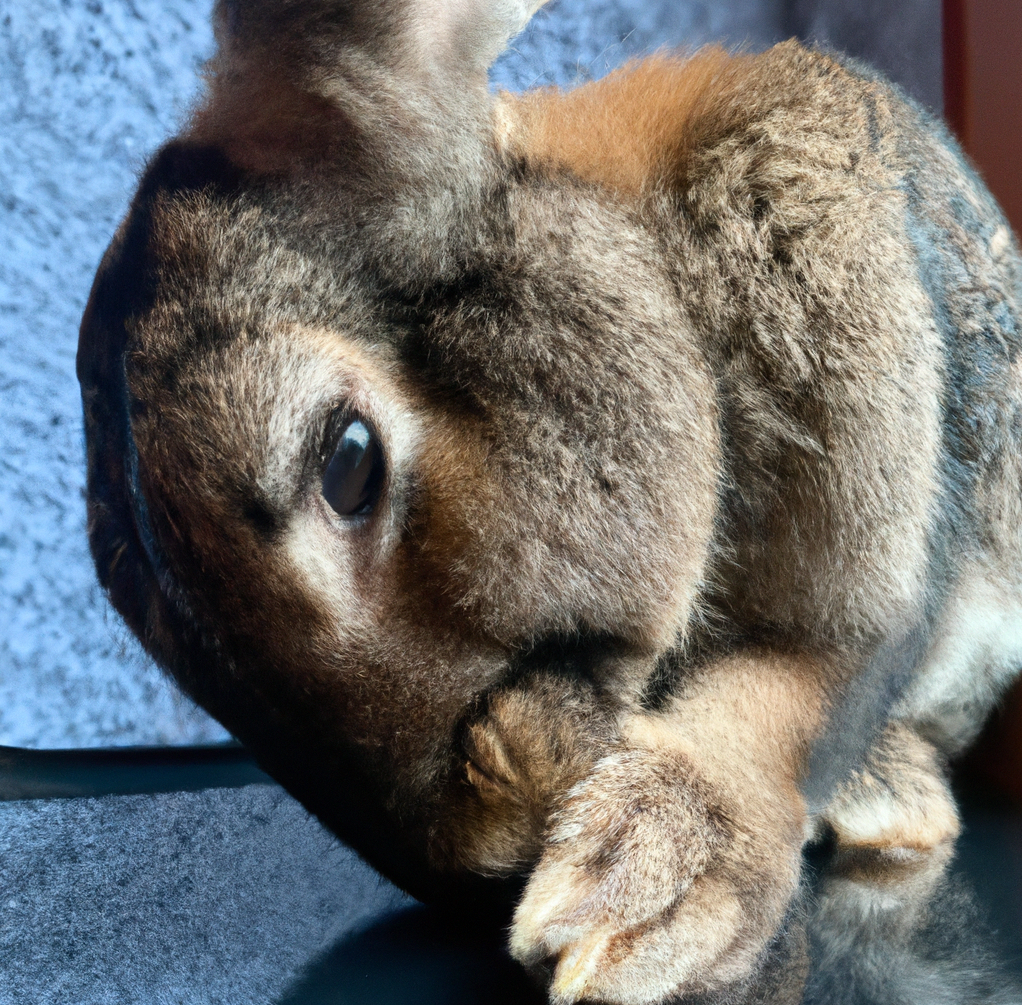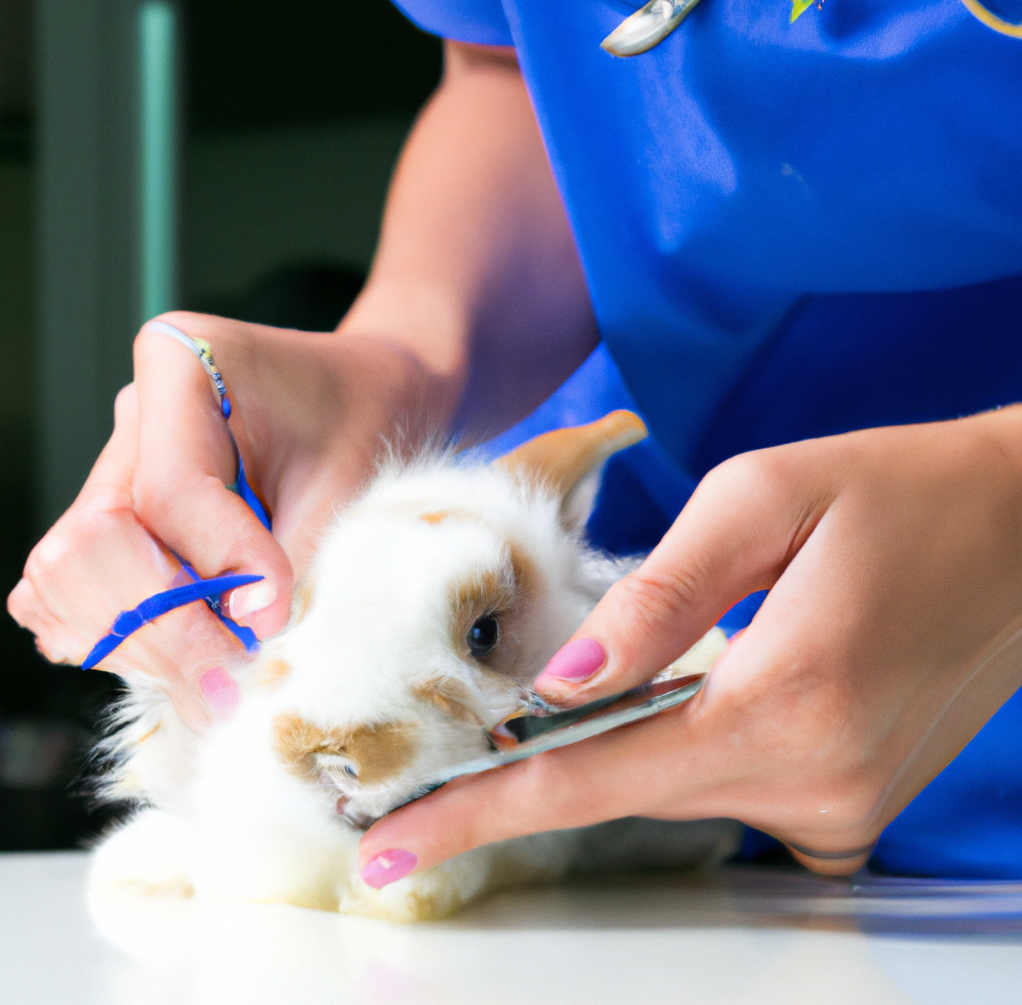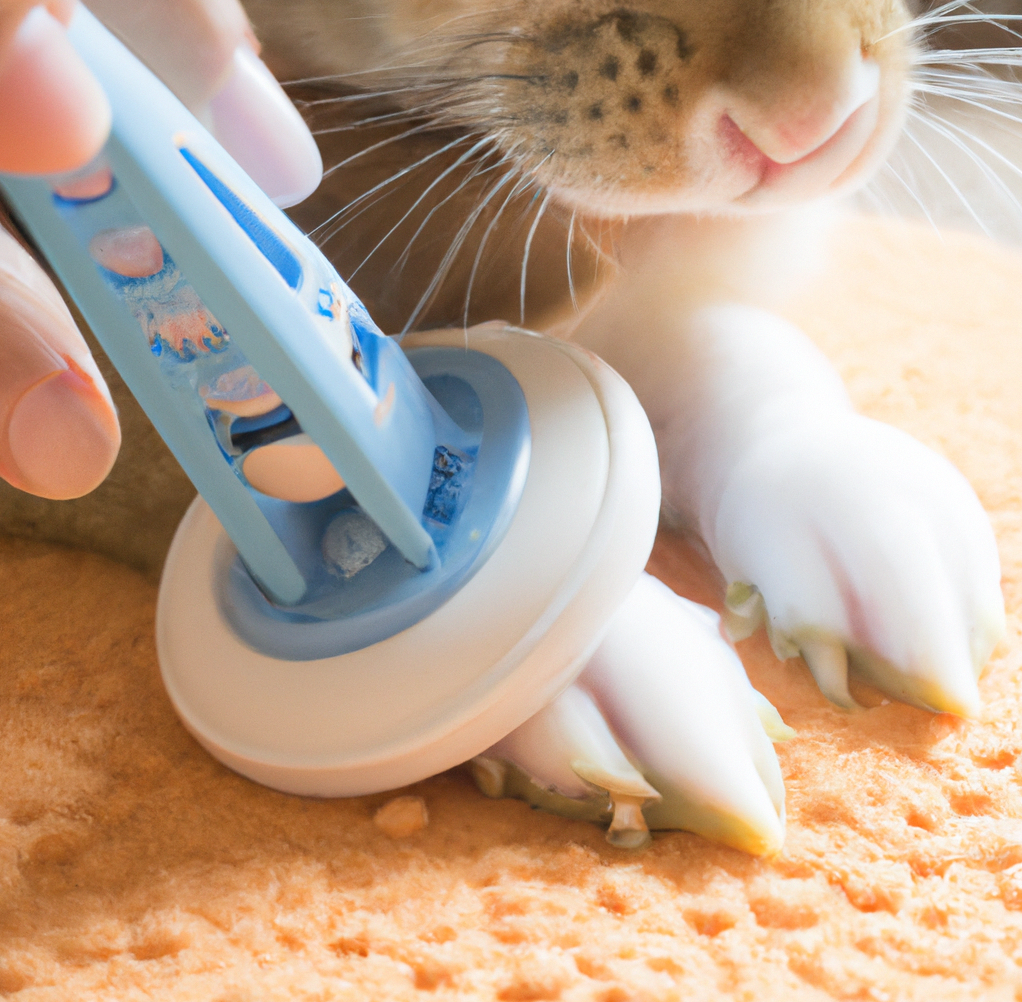Rabbits are delicate creatures, and their nails can easily break off if they become injured. Unfortunately, this can happen if a rabbit’s nail is caught on something and broken off. If this happens, it can be both painful and uncomfortable for the rabbit. In addition, the broken nail may be hanging off and even bleeding. While this injury can be scary and stressful for both the rabbit and the caregiver, it is important to take the proper steps to ensure a successful recovery. Here, we will discuss how to properly treat a broken nail and help your rabbit heal.
Causes of Rabbit Nail Breaks and How to Prevent Injuries
Rabbit nails can break due to a variety of causes, including improper handling, incorrect trimming, or accidental trauma. In order to prevent such injuries, there are a few steps that can be taken.
First, it is important to handle rabbits correctly. When picking up a rabbit, the owner should use one hand to support the chest and the other hand to support the hindquarters. This will prevent rabbits from slipping and potentially injuring themselves. Additionally, owners should be gentle when handling their rabbits and avoid squeezing them too tightly.
Second, owners should be aware of the proper techniques for trimming rabbit nails. The nails should be trimmed in a straight line and the quick should be avoided. The quick is the area of the nail where the nerves and blood vessels are located and if it is cut, it can cause pain and bleeding. Trimming should be done slowly, as cutting too quickly can cause the nail to split.
Finally, owners should pay attention to the environment in which their rabbit is kept. If rabbits are kept in an outdoor enclosure, it is important to make sure that there is no debris or sharp objects that could injure the animal’s feet. Inside rabbits should also be provided with a soft surface for them to walk on, such as a fleece or other padded material.
By following these steps, owners can help to prevent their rabbits from suffering from painful and potentially dangerous nail breaks.
What to Do When Your Rabbit’s Nail Is Hanging Off
If your rabbit’s nail is hanging off, it is important to take quick action to ensure the health and safety of your pet. There are a few steps that you should take in order to properly address the issue.
First, check the wound to make sure there is no dirt or debris present and that the nail bed is not bleeding. If there is any dirt present, clean the area with warm water and a mild soap and rinse the area thoroughly.
Next, you will need to assess the nail. If it is still attached to the nail bed, it can be trimmed with a pair of nail clippers. Make sure to cut the nail at a 45-degree angle and use caution to avoid cutting too close to the nail bed.
If the nail has completely detached from the nail bed, it will need to be removed. To do this, you will need a pair of tweezers. Make sure to grip the nail as close to the nail bed as possible and gently pull the nail out.
Once the nail has been removed, apply an antibiotic ointment and a small bandage over the area to help protect it from dirt and infection.
Finally, monitor the area for any signs of infection such as redness, swelling, or drainage. If you notice any of these signs, contact your veterinarian for further treatment.
By following these steps, you can help ensure your rabbit’s health and safety if their nail is hanging off.
How to Treat a Rabbit With a Broken Nail

If a rabbit has a broken nail, it is important to take action quickly to prevent infection and further damage.
First, assess the extent of the injury. If the nail is broken close to the base, it is likely that the nail bed is also damaged. If the nail is split, but still firmly attached, it is possible that the damage is not as severe. Gently examine the area for any sign of infection.
If the injury appears minor, soak the affected area in warm, salty water. This will help to clean the wound and reduce any swelling. If the nail is still firmly attached, use a bandage to wrap the area, making sure to clean the wound and bandage the area regularly.
If the injury appears more serious, or if the nail has been completely detached, seek veterinary attention immediately. The vet will clean the wound, and may need to take further action, such as stitching the nail back into place.
In all cases, ensure the rabbit is kept in a clean, dry environment with plenty of bedding to prevent further irritation. If the rabbit is in any pain, it is important to administer the correct dose of pain-relief medication. It is also essential to ensure that the rabbit has access to plenty of fresh water and a balanced diet.
If the nail is not treated promptly and effectively, infection may spread and can cause serious harm to the rabbit. Therefore, it is important to take action to treat the injury as soon as possible.
Tips for Supporting Rabbit Nail Recovery After Injury
1. Keep the injured area clean: Clean the injured area regularly with a warm saline solution. This will help to prevent infection and promote healing.
2. Keep the nail trimmed: After the nail has been injured, you should keep it trimmed to avoid further injury.
3. Apply a protective layer: You can use a bandage or ointment to help protect the injured area and keep it clean.
4. Offer your rabbit a comfortable place to rest: After a nail injury, your rabbit may be in pain. Ensure that your rabbit has a comfortable place to rest and keep off of their feet.
5. Provide pain relief: Pain relievers such as ibuprofen can be given to rabbits to help reduce pain and swelling.
6. Monitor the injury: Monitor the injury regularly to ensure that it is healing properly. If there is no improvement or the injury worsens, contact a veterinarian.
7. Follow the veterinarian’s advice: If your rabbit requires medical attention, it is important to follow the advice of the veterinarian to ensure the best possible outcome.
Understanding Rabbit Claw Anatomy and Injury Prevention
Rabbit claws are essential for a rabbit’s ability to climb, groom, and defend itself; thus, it is important for owners to understand the anatomy of the claws and how to help prevent injuries.
The rabbit claw consists of two parts: the nail and the dewclaw. The nail is the long, thin part of the claw that is made of keratin, the same material as human fingernails. The dewclaw is the “thumb” of the rabbit’s claw, located on the inside of the paw. It is shorter and thicker than the nail and is made of bone. Both parts of the claw are important for balance and mobility.
Injuries can occur to the claws if they become too long or if the rabbit catches them on something. To prevent this, rabbit owners should check their pet’s claws regularly and trim them if necessary. Trimming should be done with special nail scissors, and the nails should be cut at a 45-degree angle. If the dewclaw needs to be trimmed, it should be done gently and carefully using nail clippers.
In addition to trimming, owners should also provide their rabbits with plenty of opportunities to exercise. This will help keep the claws from growing too long and will also help to keep them healthy and strong. Additionally, providing the rabbit with access to a scratching post or other objects to scratch and climb upon will help to keep the claws in good condition.
By understanding the anatomy of the rabbit claw and taking the necessary precautions to prevent injury, owners can ensure their rabbit’s claws remain healthy and strong.
The Benefits of Rabbit Nail Trimming and Clipping
Rabbit nail trimming and clipping are important for your pet’s health and well-being. By keeping their nails short and trim, you can help prevent injury and discomfort for your furry friend. Trimming and clipping your rabbit’s nails can also help reduce the risk of damaging your furniture, carpets, and flooring.
Regular nail trimming and clipping can prevent your rabbit from scratching and damaging its fur. Long nails can become caught in the fur and cause injury to your rabbit’s skin. Additionally, long nails can become ingrown and cause infection. Trimming and clipping your rabbit’s nails will help ensure they remain healthy and free of injury.
Trimming and clipping your rabbit’s nails can also help reduce the risk of infection. Long nails can pick up bacteria and dirt from the ground, which can then be transferred to your pet’s skin. Keeping your rabbit’s nails short and trim can help reduce the risk of infection and other illnesses.
Furthermore, trimming and clipping your rabbit’s nails can help keep your home and furniture safe from damage. Long nails can snag carpets and other fabrics, as well as scratch and damage furniture. Keeping your rabbit’s nails trimmed and clipped will help reduce the risk of damage to your home and belongings.
Overall, regular nail trimming and clipping are important for your rabbit’s health and well-being. Trimming and clipping your rabbit’s nails can help prevent injury, reduce the risk of infection, and keep your home and furniture safe from damage. By trimming and clipping your rabbit’s nails regularly, you can ensure your furry friend stays healthy and happy.
Tips for Treating Bleeding Claws in Rabbits

1. Trim the claws regularly: Trimming your rabbit’s claws regularly can help to prevent excessive growth and the occurrence of bleeding. It is recommended to trim the claws every two to three weeks to ensure proper maintenance.
2. Use a proper clipper for the job: When trimming the claws, it is important to use a proper clipper that is designed specifically for small animals. This will help to ensure a smooth, clean cut.
3. Be aware of the quick: The “quick” is the blood supply that runs through the nail and should be avoided when trimming. If the quick is cut, it will cause the claw to bleed.
4. Apply styptic powder: If the claw does begin to bleed, it is important to act quickly. The best way to stop the bleeding is to apply styptic powder. This powder can be found in most pet stores and is a great way to help stop bleeding.
5. Put pressure on the wound: Once the styptic powder has been applied, it is important to put pressure on the wound. This will help to stop the bleeding and allow the wound to heal.
6. Keep the area clean: It is important to keep the area clean and free from infection. After trimming the claws, it is recommended to clean the area with warm water and a mild soap to remove any dirt or debris.
7. Monitor the wound: It is important to monitor the wound to ensure proper healing. If the wound does not appear to be healing, it is important to contact your veterinarian for further advice.
How to Care for a Rabbit With a Missing Nail
If your rabbit is missing a nail, it is important to take the proper steps to ensure that their paw is kept clean and healthy. Here are some tips for caring for a rabbit with a missing nail:
1. Keep the area clean: It is important to keep the area around the missing nail clean to help prevent infection. Use a warm, damp cloth to gently clean the area around the nail and pat it dry.
2. Provide cushioning: To help protect the area from further damage, it is important to provide cushioning that will help support the area. You can use a small piece of cotton or gauze to provide a soft barrier between the bare skin and the surface.
3. Provide protection: If the area is exposed, it is important to provide a protective barrier to help keep dirt and debris out. You can use a bandage or a piece of gauze to help protect the area.
4. Monitor the area: Monitor the area closely to make sure there are no signs of infection. If you notice any redness, swelling, or discharge, contact your veterinarian immediately.
By following these tips, you can help keep your rabbit’s paw healthy and comfortable. Additionally, make sure to provide plenty of soft bedding to help prevent further injury to the area.
Conclusion
Rabbit nail injuries can be serious, and they can cause a lot of pain and trauma to the animal. If a rabbit’s nail breaks off or is hanging off, it is important to seek veterinary attention right away. If the bleeding is severe, it is best to wrap the foot and restrict the animal’s movement to prevent further damage. With proper treatment and care, the rabbit’s claw should heal and the animal should make a full recovery.

